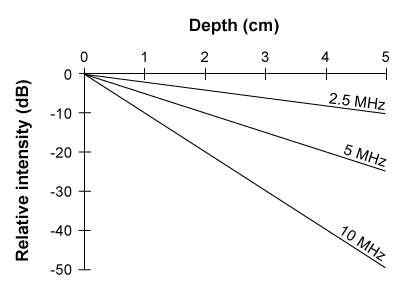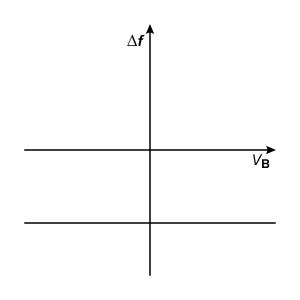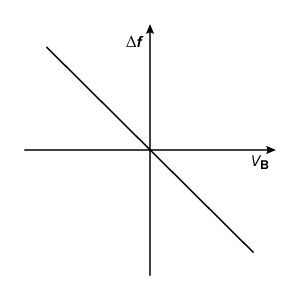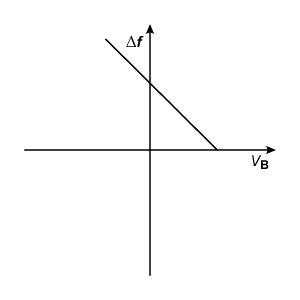Passage
Ultrasound is a technique that uses the propagation properties of high-frequency sound waves to construct images of internal organs or to measure blood flow velocity. The shape and position of internal organs are resolved by measuring the return time of reflected ultrasound waves. Similarly, blood flow velocity is resolved by measuring the Doppler shift of reflected ultrasound waves. An ultrasound device consists of an array of piezoelectric crystals and an acoustic lens. The piezoelectric crystals generate sound when an alternating voltage is applied, and the acoustic lens increases the transmission efficiency from the device to the body by reducing sound reflection at the skin.Ultrasound is performed using frequencies in the range of 2-15 MHz. The lower ultrasound frequencies are used for deep abdomen and obstetric/gynecological imaging due to their greater penetrating ability. The higher ultrasound frequencies have less penetrating ability but provide higher resolution, and therefore are used for blood flow measurements and the imaging of more superficial structures. Detailed ultrasound penetration data is shown in Figure 1.
 Figure 1 Penetration in soft tissue for three different ultrasound frequenciesSound waves propagate through soft tissue at an average speed of 1,500 m/s and through blood at 1,570 m/s.
Figure 1 Penetration in soft tissue for three different ultrasound frequenciesSound waves propagate through soft tissue at an average speed of 1,500 m/s and through blood at 1,570 m/s.
-Blood flows toward and later passes by a doppler ultrasound probe that is fixed in place. Relative to the probe, the velocity of blood changes from negative to positive. Which of the following best illustrates the relationship between blood velocity vB and the frequency shift of returning waveforms Δf?
A) 
B) 
C) 
D) 
Correct Answer:
Verified
Q75: Passage
Positron emission tomography (PET) is a medical
Q76: Passage
Ultrasound is a technique that uses the
Q77: Passage
Ultrasound is a technique that uses the
Q78: Passage
Positron emission tomography (PET) is a medical
Q79: Passage
Ultrasound is a technique that uses the
Q81: Passage
Laparoscopy is a minimally invasive surgical procedure
Q82: Passage
Laparoscopy is a minimally invasive surgical procedure
Q83: Passage
Cable theory is a mathematical model used
Q84: Passage
Laparoscopy is a minimally invasive surgical procedure
Q85: Passage
Sound waves propagate through many conducting structures
Unlock this Answer For Free Now!
View this answer and more for free by performing one of the following actions

Scan the QR code to install the App and get 2 free unlocks

Unlock quizzes for free by uploading documents